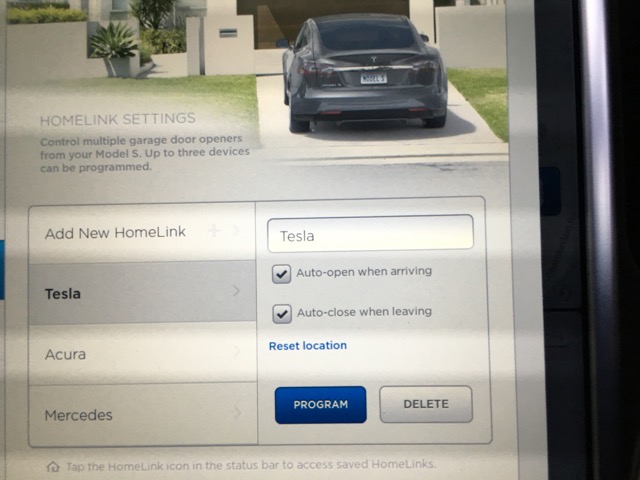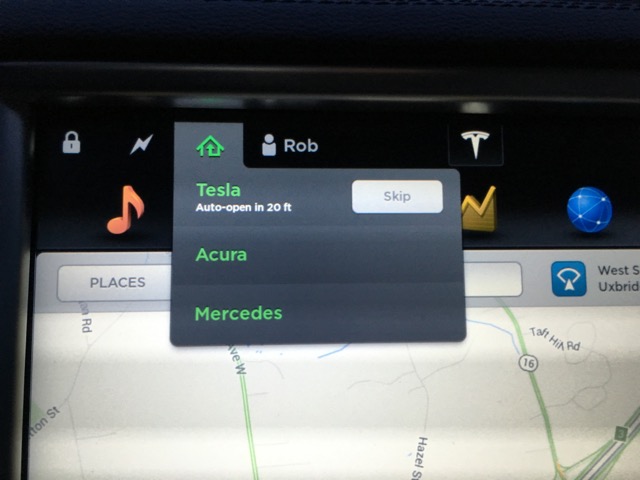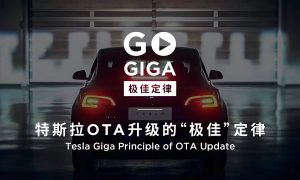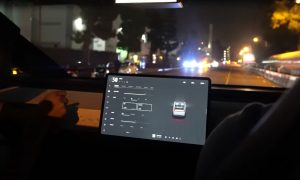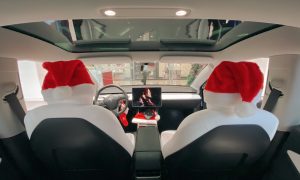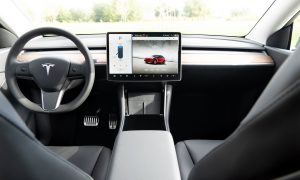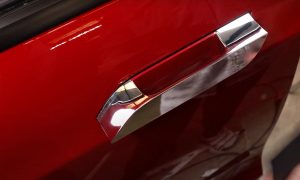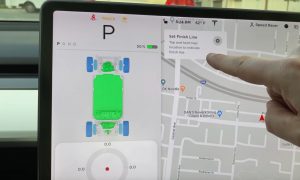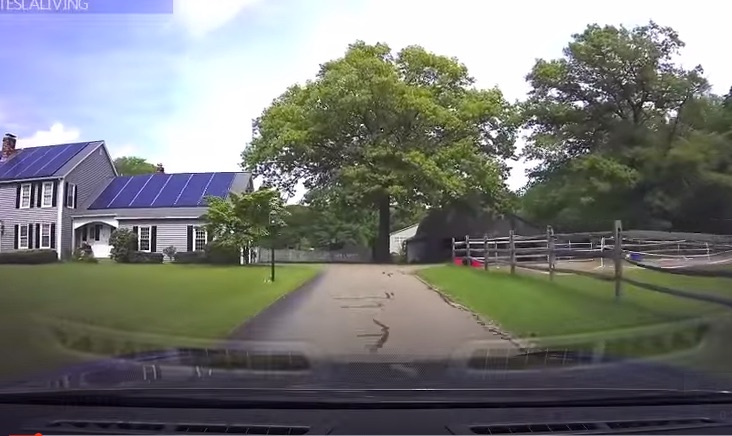

DIY
Tips on how to program Tesla HomeLink to work on a 3 car garage
Tesla released the feature to automatically open and close your garage doors through “HomeLink” back in the first iterations of version 7.1 which I had moderate success with, but given the more recent over-the-air updates being rolled out to its firmware I decided to revisit the feature and see how it will perform for my particular needs. In my case, it’s operating a 3 car garage.
Auto HomeLink
I’ve been living with 7.1 and using the new HomeLink functionality for many months now,
and as a result of that I’ve become really accustomed to having it always available to me. The feature works for me about 99% of the time, but it took some fiddling to get it to a happy place.
CHANGE DOOR LOCATIONS
I have a 3 car garage which you’ll see in the videos I describe later. All three doors are programmed into my HomeLink so I can close any given door when I’m leaving the house. From reading discussions online it seems as if not that many people attempted to do this, and rightfully so because doing so seems to cause confusion for the system.
When I originally set up HomeLink two years ago, I programmed my three doors right in front of each door. Garage doors are obviously near each other and non-military based GPS isn’t very accurate, so there’s a chance for the car to be confused about which door it’s supposed to be operating.
To remove any possibility of further confusing HomeLink I first drove away from the house to ensure I was starting from a clean slate. For the doors that I did not need to auto-open I did a “reset location” operation. In other words don’t program multiple garage doors from the same location.
CHANGE WHERE AUTO-OPEN TRIGGERS
I found that triggering auto-open right in front of the garage isn’t necessarily the best place for that as there’s a time delay from when it detects your location to when it actually triggers the garage door to open. All the while your vehicle is still rolling forward. The best case scenario is timing it so that the garage doors are already open or near open by the time your car rolls in front of the garage door.
I tried setting this from a few locations, performing the “reset location” operation at each location until I got it just right.
For various reasons I had to install my charger towards the rear of my garage which means I need to back into it. Thanks to parking sensors and the great rear view camera it has never been an issue for me.
As I pull up to my garage I swing in towards the garage and then angle away so I can back in. Getting the open position just right took some time but it was worth it to me.
In the video below you’ll see the door start to move about the time I get to the 2nd garage door. I didn’t press any buttons, it just did this for me and does it correctly about 99% of the time.
SETTING HOMELINK AUTO-CLOSE
HomeLink auto-close is a little more flaky for me even after having spent some time tweaking it. Because the hardware for HomeLink in the Model S only exists in the front of the car combined with the fact that I back into my garage, this means that the vehicle is and its HomeLink sensors are pointed away from the garage as I leave each morning.
I found that if I very slowly roll out of the garage my rate of success for HomeLink to operate as intended increases dramatically. That said it still fails enough for me to double check via my review mirror each time to make sure my garage door didn’t remain open.
For some reason bad weather seems to make this worse. I’d say auto-close works about 80% of the time which is just enough of a failure rate to be annoying but not enough for me to give up on it. I really wish Tesla had hardware in the front and the back to handle this scenario. Perhaps they’ve already done that on newer cars.
Here’s an auto-close triggering event in action.
Summary
HomeLink auto open/close is a small feature Tesla slipped into on of its minor releases. While it was intended to help the Summon feature and Autopilot cars, it’s still been very helpful to me as a “classic” Model S owner without those capabilities.
One of my big concerns as Tesla continues to grow and expand is that they neglect the original buyers of the Roadsters and Model S and focus solely on newer cars and the needs of those owners. A great amount of software tuning and updates have gone into those Falcon Wing Doors, and probably a rumored HUD for the Model 3. Meanwhile, the Navigation system (on all cars) is still severely lacking in some areas (waypoints anyone?), and many of these other areas could use some tuning.
I’m thankful for new feature additions like HomeLink auto open/close, but I’d love to see Tesla continue to dedicate a few more resources to improving features that can help all current owners, especially those features that just never felt complete (ex. Navigation and Trip Planner).
DIY
Tesla Model 3 pickup “Truckla” gets updates and a perfectly wholesome robot charger
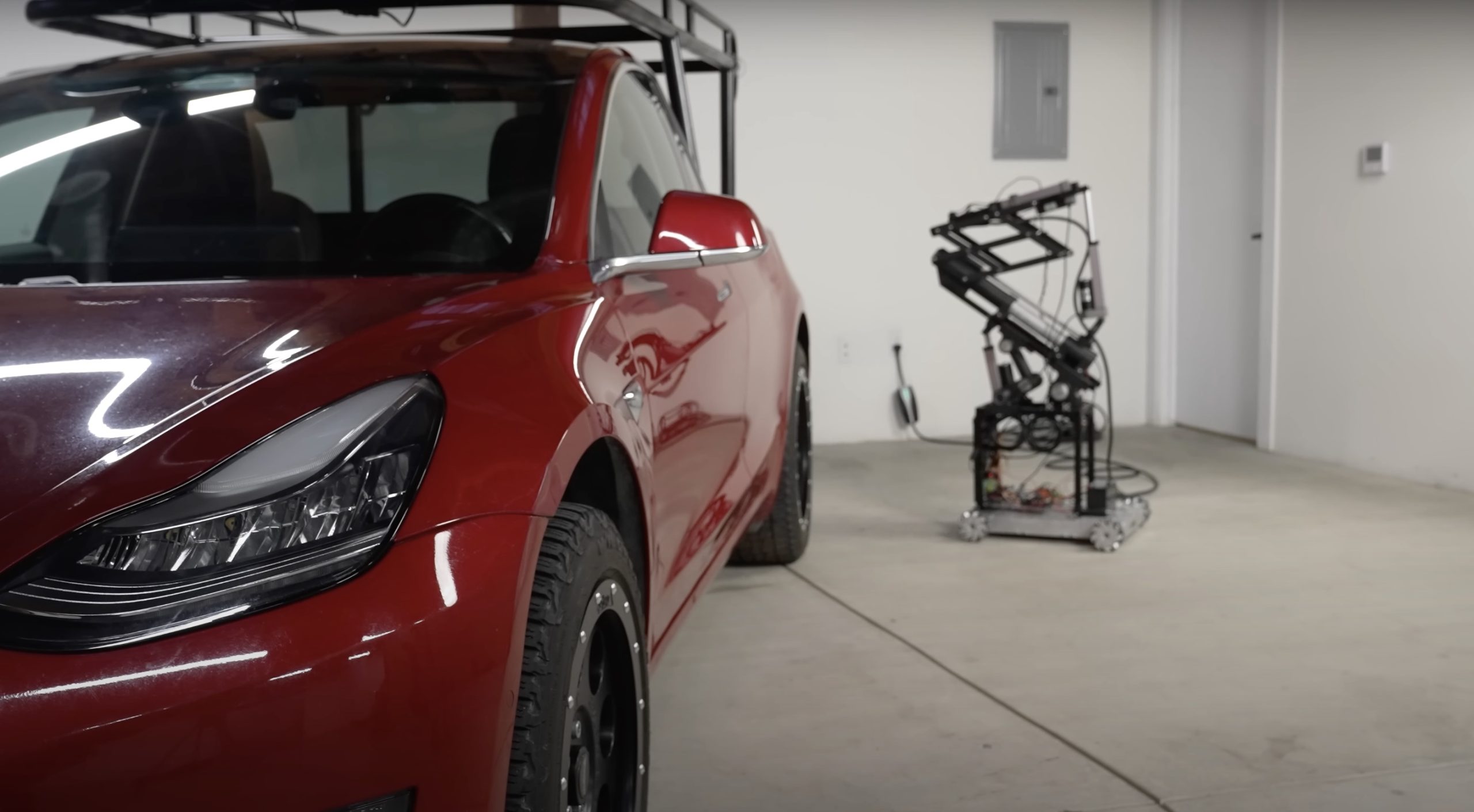
Back in 2019, YouTuber Simone Giertz, the self-proclaimed “Queen of Sh*tty Robots,” created a one-off Tesla Model 3 build that took the automotive world by storm. Fondly dubbed as “Truckla,” Giertz noted that the vehicle was actually her dream car — as crazy as that may sound.
Now almost four years later, the YouTuber posted an update on Truckla. And just like every other big project that one probably started, Giertz stated that she actually stopped working on Truckla when the vehicle was about 80% complete. The car is driving though, but a lot of stuff was not really working very well.
Thus, for her Truckla update, Giertz shared how most of her Model 3 pickup truck conversion was essentially completed. Truckla got a lot of detailing done, she got a slight lift, and she now has a functional tailgate. One has to admit, Truckla’s tailgate is pretty darn cool.
The “Queen of Sh*tty Robots” also opted to give Truckla a friend in the form of an automatic robot charger. Unlike Tesla’s rather interesting snake charger from years past, Truckla’s charger would come in the form of a rover, thanks to her friends at robotics platform Viam. Giertz aptly named Truckla’s robot charger friend “Chargela,” which is an appropriate name for such an invention.
Also true to form for Giertz, Chargela’s first encounter with Truckla was just a tiny bit awkward. One could say that Chargela may have just been a little bit nervous on his first try without human hands helping him. Most importantly, the system did work, so Giertz would likely keep using Chargela for her Model 3 pickup.
Teslas are very tech-heavy vehicles, so projects like Giertz’s Truckla are always remarkable. The fact that the Model 3 works perfectly fine despite having a good chunk of it cut off and turned into a pickup truck bed is mighty impressive any way one looks at it. Overall, Truckla will always be one of the coolest Tesla DIY projects to date, so any updates about the vehicle are always appreciated.
Truckla’s nearly four-year update can be viewed below.
Don’t hesitate to contact us with news tips. Just send a message to simon@teslarati.com to give us a heads up.
DIY
Tesla fan creating ‘CyberRoadster’ using Model 3 Performance parts in epic DIY build
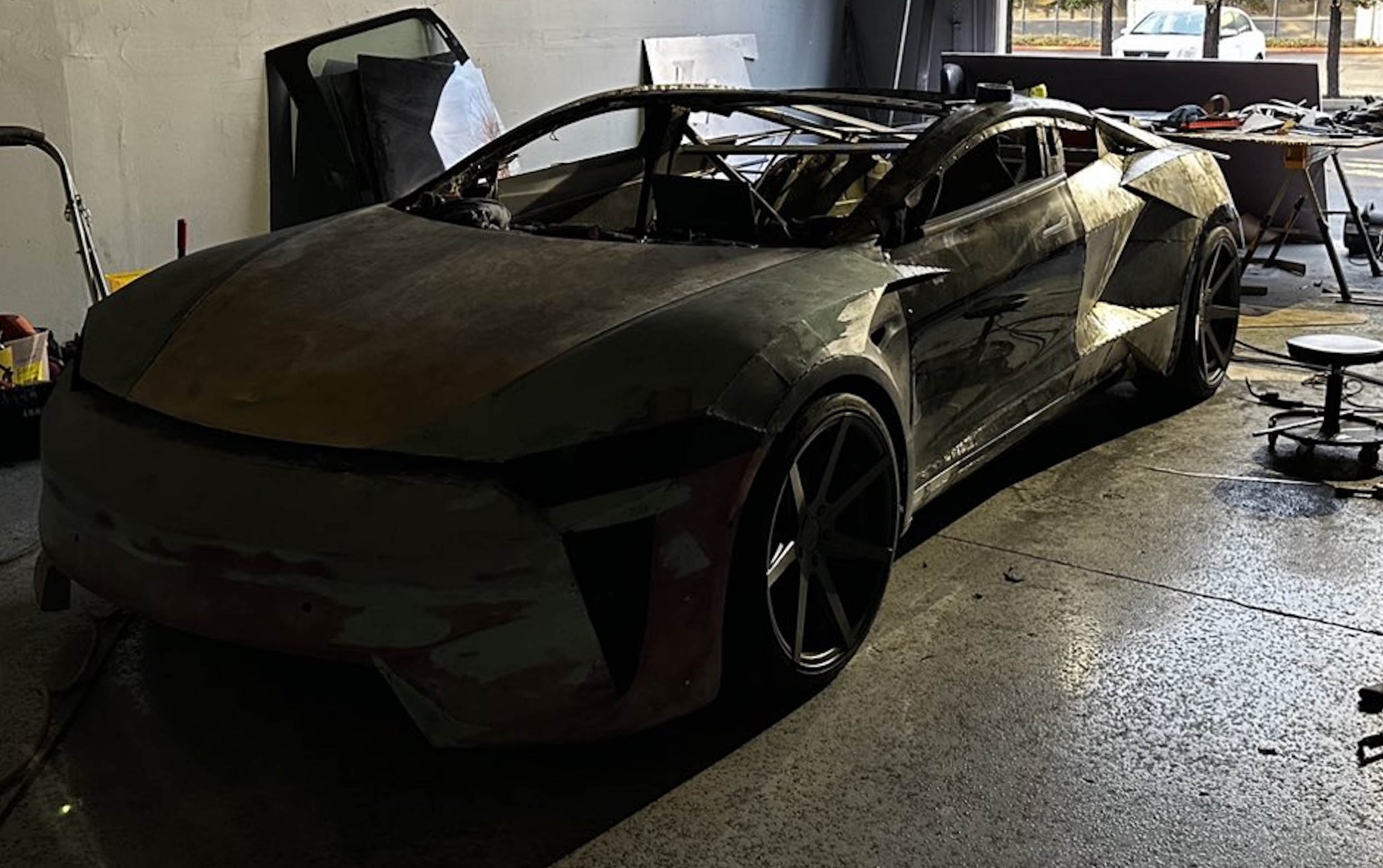
A Tesla owner is taking his hobby and love for electric vehicles to new levels by creating what could only be described as one of the coolest EV-related DIY projects to date. The idea for the project is simple: what happens when you cross a supercar with the Cybertruck? You end up with a two-seater CyberRoadster.
Tesla owner David Andreyev, who goes by the username @Cyber_Hooligan_ on Twitter, has spent the last few months creating a Cybertruck-inspired version of the next-generation Roadster made from a salvaged Model 3 Performance. Starting with a Model 3 Performance is an inspired choice, considering that it is Tesla’s first vehicle that has a dedicated Track Mode.
A look at Andreyev’s YouTube channel, which can be accessed here, shows the meticulous build that the Tesla owner has implemented on the project car. What’s particularly cool about the CyberRoadster is the fact that it’s being built with parts that are also from other Tesla vehicles, like its front bumper that came from a new Model S. Recent videos suggest that the project car’s rear bumper will be from a new Model S as well.
The journey is long for Andreyev, so the completion of the CyberRoadster will likely take some more time. Despite this, seeing the Tesla owner’s DIY journey on such an epic build is more than satisfying. And considering that the CyberRoadster is evidently a labor of love from the Tesla owner, the final results would likely be extremely worth it.
There’s a lot of crazy Tesla modifications that have been done as of late. But some, as it is with a lot of things on the internet these days, have become more silly gimmicks than serious automotive projects. Fortunately, car enthusiasts like Andreyev, who just happen to also love electric vehicles, are taking it upon themselves to create one-of-a-kind EVs that would surely capture the attention of anyone on the road.
Check out the latest video in the CyberRoadster’s creation below.
Don’t hesitate to contact us with news tips. Just send a message to simon@teslarati.com to give us a heads up.
DIY
Tesla owner ‘charges’ Model 3 with homemade solar panel trailer
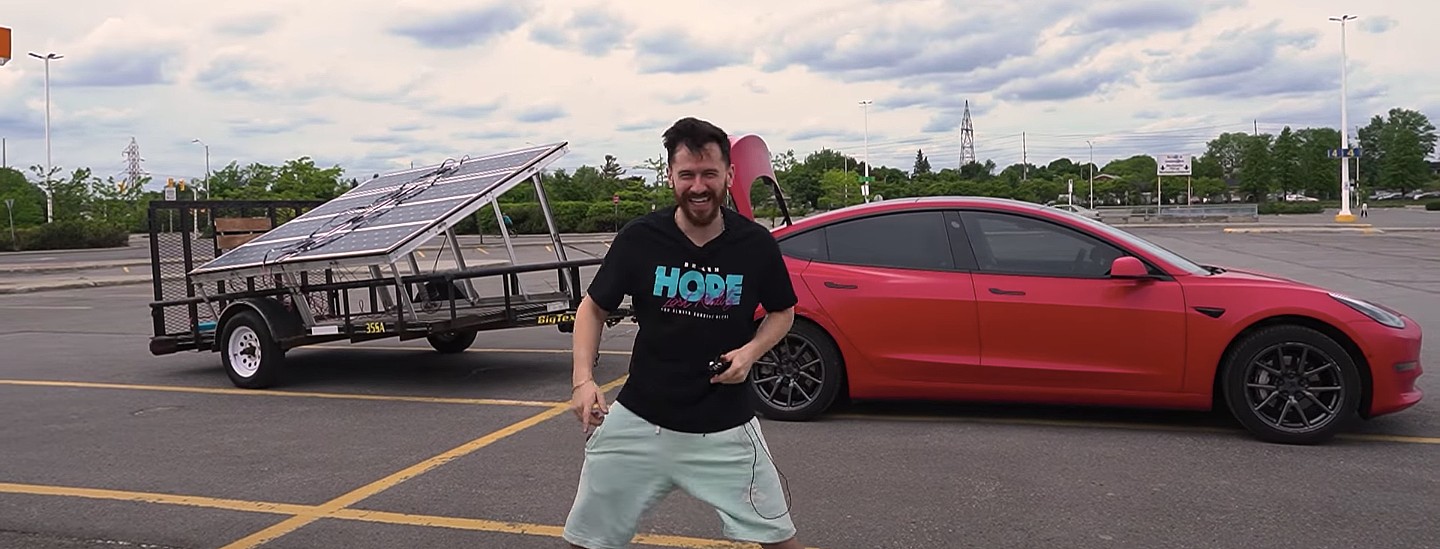
A Tesla owner has demonstrated a rather novel way to charge his Model 3. In a recent video, Sean Callaghan of the ItsYeBoi YouTube channel opted to use a series of off-the-shelf solar panel sheets onto a towable trailer to create a mobile charging unit for his all-electric sedan.
Callaghan planned to use only the sun and the solar sheets purchased from e-commerce platform Wish to charge his Model 3. The solar panel sheets would collect energy from the sun and transfer it to a control panel. The control panels were connected to batteries that would hold the energy—the batteries connected to an inverter, which would then charge the Tesla Model 3.
The entire assembly would provide the Model 3 with about 800 watts of energy on a completely sunny day. However, Callaghan shot the video when weather was overcast, so the entire solar panel trailer build only managed to provide around 300 watts throughout the YouTube host’s test.
To put this into perspective, a 100 volt home wall outlet provides 1.4 kilowatts of power, or 1,400 watts. Therefore, the 300-watt solar panel assembly built by Callaghan was producing less than 25% of the energy of a typical wall outlet. This is pretty marginal compared to Tesla’s 250-kilowatt V3 Superchargers, which provides 250,000 watts, or about 833 times as much power as the makeshift solar panel build.
However, Callaghan’s goal was not to charge the vehicle quickly. He explained the idea came from a previous video where he used a $5,000 Wish-purchased wind turbine to charge his Model 3. He wanted to test the effectiveness and efficiency of the system, which was questionable due to the time it would take to charge the battery fully.
The Model 3 battery pack is 78 kWh, and with Callaghan’s 300-watt system charging his electric vehicle, it would take 260 hours to supply the Tesla’s battery to full capacity.
In the past, electric vehicle enthusiasts have asked Tesla CEO Elon Musk why the company’s vehicles do not contain solar glass roofing, which would charge the car while the owner is driving. Musk has explained that the efficiency of this idea is challenging and likely would not provide an ample amount of range.
When asked about the idea of putting solar panels on the top of Tesla’s vehicles in 2017, Musk responded that the idea was “Not that helpful, because the actual surface of the car is not that much, and cars are often inside. The least efficient place to put solar is on the car.” It also would not be cost-effective for Tesla because “the cost of the panels and electronics, R&D and assembly would never pay for itself in the life of the vehicle, compared to charging from the wall in your garage,” Quartz noted.
That being said, Tesla plans to implement solar panels onto the motorized tonneau of the upcoming Cybertruck. The idea was discussed on Twitter when Musk stated that the optional feature would add “15 miles per day, possibly more” when parked in the sunlight. Also, fold-out solar wings could help capture enough solar energy for 30 to 40 miles a day.
Watch Sean Callaghan’s video of his makeshift solar panel trailer below.
-

 Elon Musk2 weeks ago
Elon Musk2 weeks agoTesla investors will be shocked by Jim Cramer’s latest assessment
-

 Elon Musk2 days ago
Elon Musk2 days agoxAI launches Grok 4 with new $300/month SuperGrok Heavy subscription
-

 Elon Musk5 days ago
Elon Musk5 days agoElon Musk confirms Grok 4 launch on July 9 with livestream event
-

 News1 week ago
News1 week agoTesla Model 3 ranks as the safest new car in Europe for 2025, per Euro NCAP tests
-

 Elon Musk2 weeks ago
Elon Musk2 weeks agoA Tesla just delivered itself to a customer autonomously, Elon Musk confirms
-

 Elon Musk1 week ago
Elon Musk1 week agoxAI’s Memphis data center receives air permit despite community criticism
-

 News2 weeks ago
News2 weeks agoXiaomi CEO congratulates Tesla on first FSD delivery: “We have to continue learning!”
-

 News2 weeks ago
News2 weeks agoTesla sees explosive sales growth in UK, Spain, and Netherlands in June

